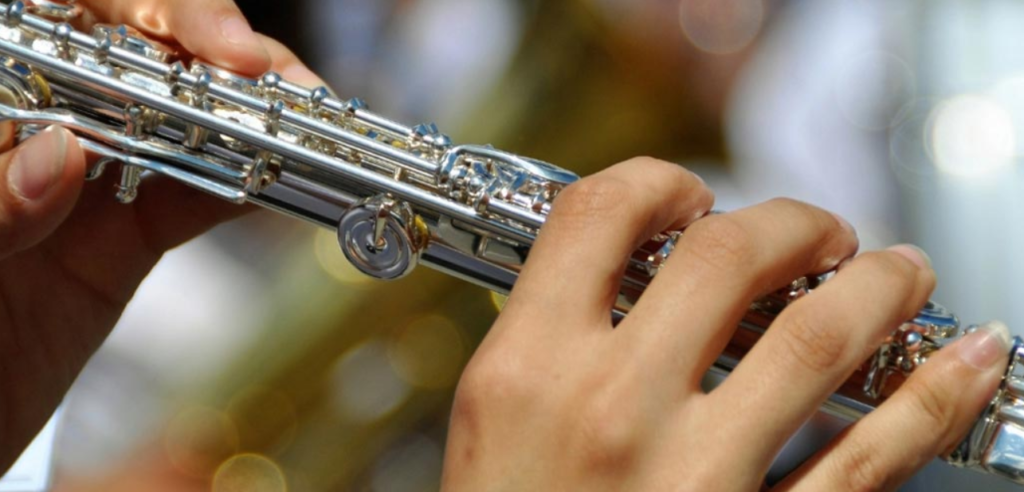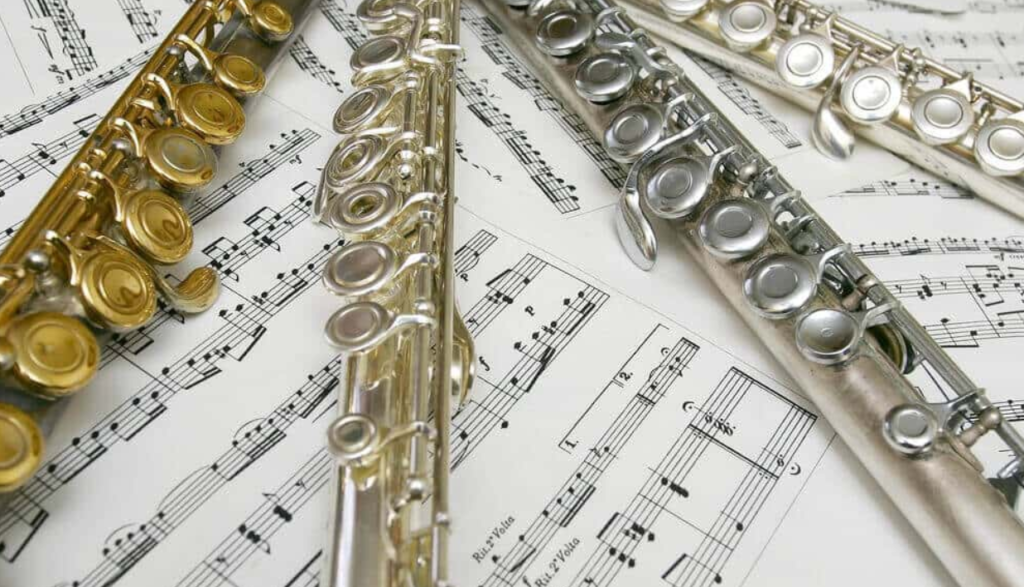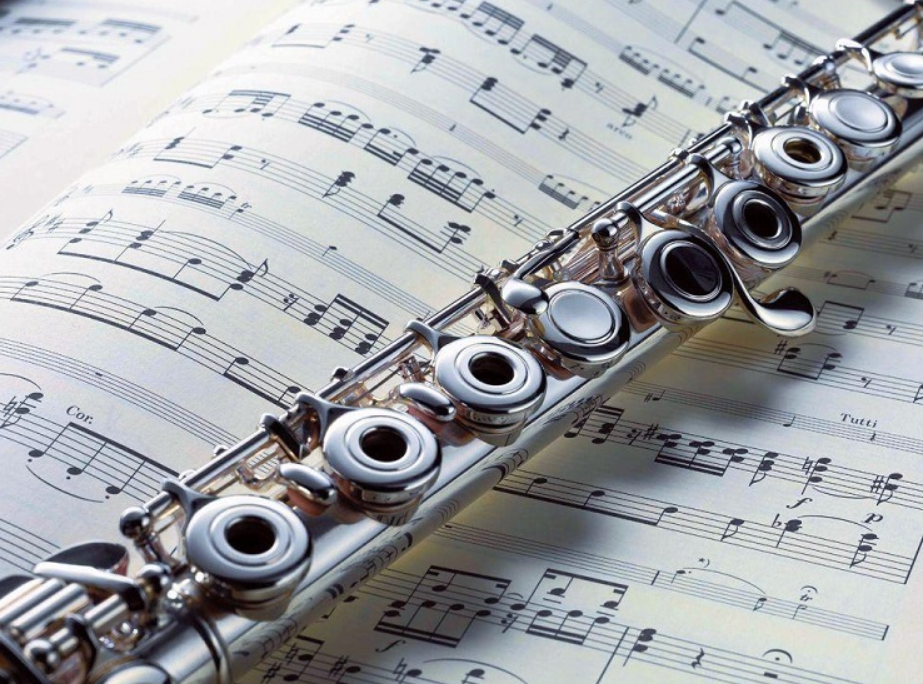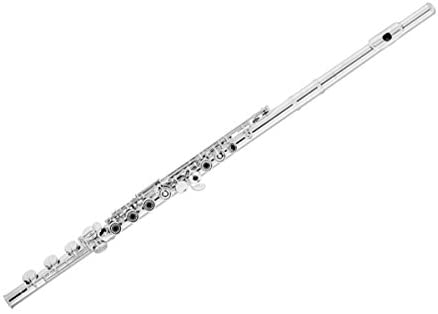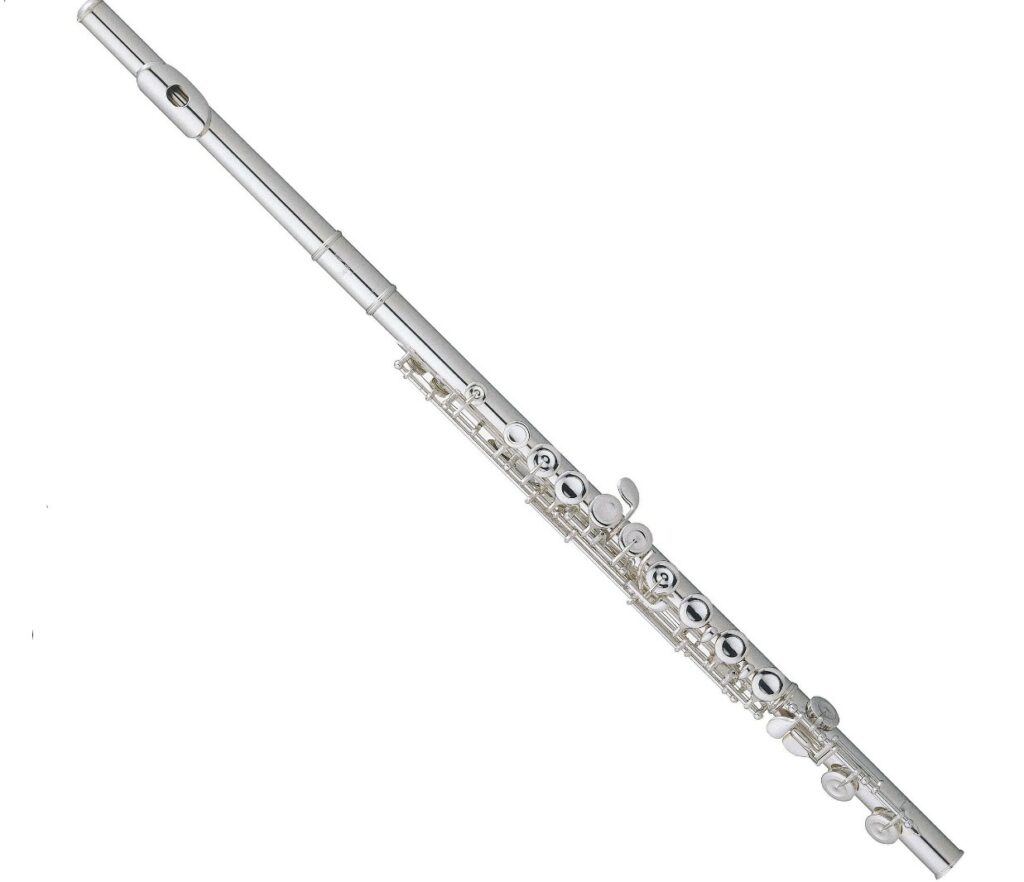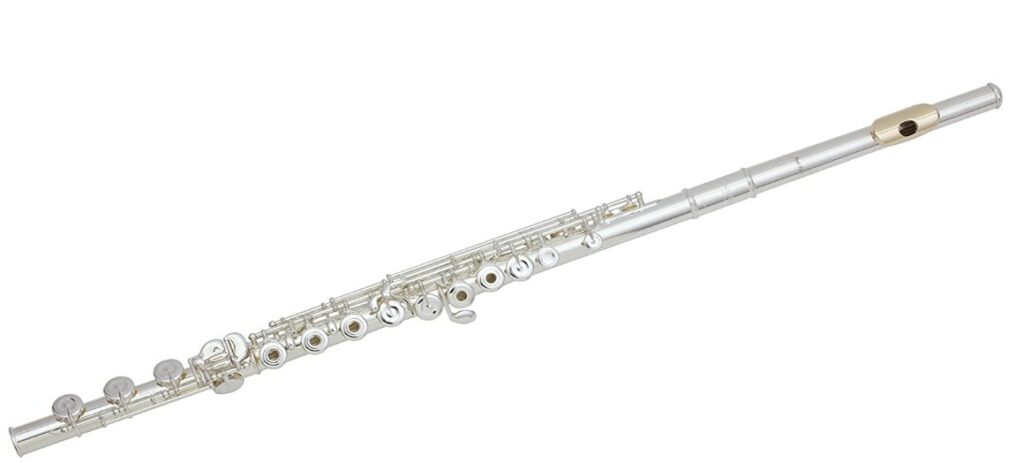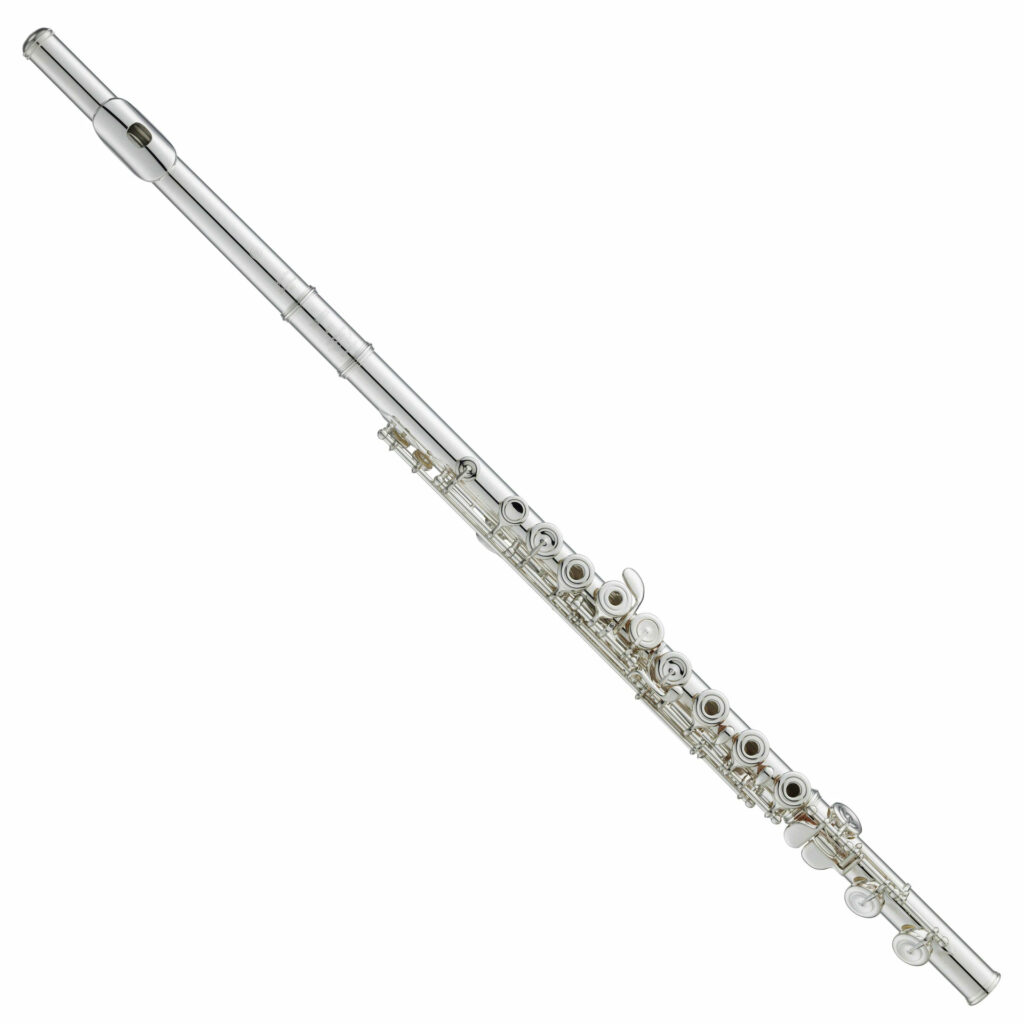- How to Find the Best Sopranino Saxophone - May 31, 2022
- How to Find the Best Contrabass Saxophone - May 30, 2022
- Trumpet Range Guide: Understanding The Entire Trumpet Range - May 19, 2022
Do you want to give yourself the best chance of playing and enjoying the flute? You need to know how to find the best flute based on you and your playing level.
Without the right flute, playing will be much harder and more frustrating. Luckily, you don’t need to worry about if there’s a good flute for you or not.
Why Does Having A Good Flute Matter?
Having a good flute matter because it can make a huge difference in your playing. If you’re a beginner, a good flute will have the right features and design to make it easy to get a sound.
When you upgrade to an intermediate or professional flute, a good instrument will have the right features for you. That way, you can continue to develop your sound and play more difficult music.
If you don’t have a good flute, you may need to practice a lot more to get the same results. But that can lead to a repetitive stress injury, making playing impossible.
How To Find The Best Flute
Whether you’re a beginner or need to upgrade, you should know how to find the best flute. There are dozens of flute brands and probably hundreds of flute models available.
Fortunately, you don’t have to try every brand and model out there to find the right instrument for you. Instead, you can follow a series of steps to narrow your search.
Then, you’ll be able to find the flute that works the best for you and your playing.
Determine Your Level
Before you start looking at flutes, you need to know your flute playing level. If you have little to no playing experience, you can look for a beginner model.
When you’ve been playing for a couple of years, you might want to find a step-up or intermediate flute. Finally, after a few more years or even decades of playing, a professional, handmade flute is worth the investment.
If you aren’t sure what level you are at, consult with a flute teacher. They can review your playing and help you figure out what type of flute is best for you.
Consider Your Budget
You also need to think about how much you can afford or want to spend on a flute. Beginner flutes tend to cost less than intermediate models, which aren’t as expensive as flutes at the professional level.
Odds are, you’ll know how serious you are about the instrument when you’re ready to buy. Still, beginner models cost around $400 to over $1,000.
Intermediate flutes can cost $1,000 to $3,500, and professional instruments go up from there to $84,000. Knowing your budget can help you narrow your search to find the right flute for you.
Research Brands
Another crucial step to take before buying a flute is to research reputable instrument brands. While there are dozens of great flute makers, there are plenty of cheap brands that aren’t worth the money.
Most of those instruments won’t last long, so you’ll just have to spend more money on a better flute. Some good brands to consider include Pearl, Yamaha, Di Zhao, and Gemeinhardt.
However, you can find tons of other fantastic flute brands at all levels. Then, you can find a maker that suits your playing style and your lips and body so that you can get a flute that’s comfortable.
Compare Materials
At the beginner level, most flutes are nickel with a thin layer of silver plating. When you get to the intermediate level, you start to see solid silver with some elements that are silver-plated.
Many professional flutes use a combination of silver and silver plating, while others are entirely solid silver. Some flutes at this level also use gold, gold-plating, or a fusion of gold and silver.
If you have a lot of money to spend, you can look for a platinum flute. Or you can get a flute with platinum on the headjoint.
Think About Specs
Aside from the material, you can choose between a lot of different flute specs. Here are some popular features to consider:
- Open vs. closed holes
- Offset vs. inline G key
- French (pointed) vs. Y arms
- C vs. B footjoint
- Split E mechanism
- G donut
- C# trill key
- D# roller
Open hole keys are generally more popular at the intermediate and professional levels, while closed holes are better for beginners. The same is true when comparing a B footjoint to a C footjoint.
Some specs can make certain notes easier to play, such as the split E mechanism, which improves the response of the third-octave E. Meanwhile, the C# trill key makes trilling from B or C to C# in the first and second octaves easier.
Test Headjoint Cuts
When you’re looking to buy a professional flute, you will usually have multiple options for the cut of the embouchure hole. Some players prefer a rounder hole, while others like a hole that’s more rectangular.
The headjoint is where your airstream enters the flute, and the cut can make a big difference in your sound. Sometimes, the headjoint can change how easy it is to play the same flute body.
Also, more intermediate flutes are starting to come in different headjoint cuts. Be sure to try various shapes to figure out which works best with you and how you play.
Do A Trial
While it’s important to understand the various specs and materials, the best way to choose a flute is to try it yourself. If possible, set up a trial with a music store so that you can compare multiple models.
You can look for a local music store, but some online retailers offer trial periods. They’ll send you a few flutes at a time for you to test at home for a few days.
Whether you order a trial or go to a store in person, give yourself time to test the instruments. That way, you’ll be able to figure out how each one feels and sounds, and you can choose the best flute for you.
Go To Festivals And Conventions
Another excellent way to expose yourself to new flutes and try a ton in one setting is to go to a flute festival or convention. The biggest convention is by the National Flute Association (NFA), and it happens in August in different cities each year.
I bought my current flute at the NFA convention in 2018, and I was able to try tons of options before committing. You can also find regional flute festivals in Florida, Chicago, the Mid-Atlantic, and other areas near you.
Festivals and conventions usually have an exhibit hall where you can visit booths for different flute makers and stores. If you visit all of the booths, you may come across hundreds of flutes to try.
Check The Used Market
If you have trouble finding a new flute, consider shopping for a used model. Some flute players will sell their old beginner or intermediate model when they upgrade.
As long as they took good care of it, you can get a great deal on an amazing instrument. You’ll want to make sure the seller can either meet you in person or allow you to return the instrument so that you can try it before you buy.
Seeing the flute first also allows you to verify that it’s the brand and model the seller says it is. Unfortunately, there are a lot of scams, so you need to protect yourself.
Ask For Recommendations
To help determine how to find the best flute, consider asking your flute teacher or other flutists. Other players can recommend some brands and models, especially if they know you and you playing well.
However, they can also be biased and recommend their personal flute brand and model. While that model might work for you, it might not.
If you ask others what they like, take their responses with a grain of salt. You can test out those flutes, but know that you might not sound that great on a flute, which is okay.
Control Your Trial
When you’re reading to try some flutes, do what you can to control the testing process. The easiest way to do this is to select the music you want to use to try flutes ahead of time.
Make sure you use the same music on different models so that you can focus on the differences in the flutes. You should use music that covers the low and high registers, that’s loud and soft, and that’s fast and slow.
Then, you’ll be able to test the flute in different scenarios. So even if one flute sounds amazing at a slow tempo, you shouldn’t buy it if you struggle to play something faster.
Keep Shopping
In some cases, you may luck out and find the perfect flute on your first try. However, you might need to keep looking around to find one.
As they say in Harry Potter, the wand chooses the wizard, and that also applies to flute shopping. If you don’t really love any of the flutes you try, it’s okay to not buy any of them.
Set up another trial or visit the next flute festival to try more. Then, you’ll be able to test out different flutes that you haven’t yet, and you might find one you love.
Some Of The Best Flutes
It’s almost impossible to narrow down a list of the best flutes. During my years as a graduate flute student, most members of the flute studio played a different model.
The same thing was the case when I was in my bachelor’s, also for flute performance. And in both cases, none of the students played the same model as the professor.
Still, some flutes are better than others, especially at the beginner and intermediate levels.
Pearl 525
The Pearl 525 is a beginner flute with more features than some similar models. It has a silver lip plate and riser, while the rest of the headjoint and body are silver-plated.
This model also features open holes, which help promote good hand position for students. That way, you can keep from developing bad habits that you have to correct later.
It’s also one of the only student models with a pinless mechanism, which is easier to repair than the standard pinned mechanism. You can use this flute a lot longer than other beginner models, so you can get your money’s worth.
Pros
- Excellent for beginners and early-intermediate players
- Professional-level features
- Easy to play
Cons
- More expensive than other beginner flutes
Yamaha YFL-222
The Yamaha YFL-222 is one of the most popular flutes for beginners. This model has a lot of the standard beginner specs, including full silver-plating, closed hole keys, and a C footjoint.
Its design can help you get a good, consistent sound earlier on in your flute studies. Your intonation will also be relatively stable, so you can focus on your embouchure and learning the notes.
If you want something comfortable and ergonomic, you can’t go wrong with this flute. Just be sure you buy a genuine Yamaha because knockoffs are common.
Pros
- Easy to play
- Fantastic for beginners
- Affordable
Cons
- Possibility of buying a knockoff
Gemeinhardt 2SP
Another common beginner flute is the Gemeinhardt 2SP. The model has many standard beginner features, such as closed holes, a C footjoint, and silver plating.
Gemeinhardt flutes are very reliable, so they’re suitable for students playing in concert band or marching band. You can take the instrument outside, and it can handle climate changes easily.
Compared to other beginner flutes, this one is also pretty affordable. It’s not as cheap as some brands, but it’s an excellent combination of price and quality.
Pros
- Great features
- Durable
- Easy to play
Cons
- Not for intermediate or advanced players
Di Zhao 300
If you want to buy a beginner flute with some extra features, check out the Di Zhao 300. This model has a silver lip plate and riser and a silver-plated headjoint and body.
You also get open holes and a low B footjoint, so you can use this flute as you advance. It features an inline G, so it’s not the best for people with short fingers or small hands.
However, it’s a nice option if you have longer fingers. And if you decide to upgrade, you can keep this flute and use it as your backup instrument when you need to take your main flute in for maintenance.
Pros
- Great for beginners and intermediate players
- Easy to play
- Sounds fantastic
Cons
- Requires longer fingers
Pearl 695
Once you outgrow your beginner flute, you may want to upgrade to the Pearl 695. The flute has a full solid silver headjoint, which can give you a warmer, richer sound.
Its body and mechanism feature the same silver plating as other flutes. Like the other Pearl flute, this one has a pinless mechanism, which is easy for you to play and easy for your flute tech to repair.
The open holes are great for reinforcing good hand position, and they allow you to play certain quarter tones. And the split E mechanism helps you get a good sound on the E above the staff.
Pros
- Easy to play
- Fantastic upgrade
- Suitable for intermediate and advanced players
Cons
- A bit expensive
Azumi AZ1
Azumi is the intermediate brand that partners with the professional flute brand Altus. The Azumi AZ1 is the lowest-level model from the brand, and it’s an excellent step-up flute.
It features a solid silver lip plate and riser to add a bit of warmth to the sound. However, the rest of the instrument is silver-plated which helps lower the cost without sacrificing the quality.
The headjoint features a Z embouchure cut that you can get on a more expensive Altus headjoint. Meanwhile, the B footjoint and open holes help you play a lot more music than you can on a beginner flute.
Pros
- Great quality
- Easy to play
- Affordable
Cons
- Not much solid silver
Azumi AZ2
If you’re ready to upgrade to a better flute, be sure to try the Azumi AZ2. Azumi is a partner brand of Altus, which is one of the best Japanese flute brands, and the Azumi flutes all have an Altus headjoint.
This model comes with a full solid silver handmade headjoint. The body features open holes, an offset G key, and a low B footjoint. You also get a split E mechanism to facilitate high E.
But beware because some listings claim this flute has a solid silver body, even though it’s silver-plated. Still, it’s an amazing instrument for people looking for a little something more than what a student model can offer.
Pros
- Handmade headjoint
- Split E mechanism
- Great value
Cons
- Not quite at the professional level
Azumi A3
Also from Altus, the Azumi A3 flute has some more intermediate to advanced features than the AZ1. Despite what some product listings say, it has a solid silver headjoint and body, though the mechanism has silver plating.
This flute comes with the same Altus Z-cut headjoint, which is great for advancing players. It features a B footjoint as well as an offset G and a split E.
Unlike some other intermediate models, this flute has a C# trill key. That key is useful for many different notes and passages, and as an advanced player, I can’t live without it.
Pros
- Useful features
- Full silver tubing
- Great headjoint cut
Cons
- A little expensive
Pearl 505
The Pearl 505 is another fantastic choice for new flute players. It has a few more features than other beginner models, so you can use this flute as you advance.
You get a B footjoint, so you can play the lowest note of the flute’s range. The open holes can help enforce good hand position, so you won’t have to correct bad habits later.
This flute also features Pearl’s One-Piece Core Bar mechanism. It feels good for the player, and it’s easier for a repair technician to work on.
Pros
- Great for beginner to intermediate players
- Promotes good playing
- Easy to play
Cons
- A bit expensive for new players
Pearl Vigore 665
The Pearl Vigore 665 is yet another intermediate model flute worth trying. Like other models in this range, it has a solid silver headjoint, but this model also has a gold lip plate and riser.
You also get a C# trill key, which can help you play trills from B or C to C#. The key also stabilizes the pitch of C#, so it’s easier to hold that note for long periods.
This model even comes with a D# roller, which makes it easy for your right-hand pinky to move between keys. That way, you can play low technical passages more fluidly.
Pros
- Great features
- Warm sound
- Easy to play
Cons
- Not quite professional level
Yamaha 677H
Maybe you’re ready to upgrade to a professional flute for music school or to start your music career. Either way, you should try the Yamaha 677H.
The flute has the same quality as any other Yamaha flute, and this model has a solid silver headjoint. While the body is silver-plated, the instrument is handmade, which adds to the quality.
This model features Straubinger pads, which are some of the best flute pads on the market. You also get open holes and a low B footjoint, so you can play almost any piece for the flute.
Pros
- Great entry-level pro flute
- Excellent features
- Easy to play
Cons
- Pretty expensive
FAQs About How To Find The Best Flute
Answer: The best flute for you depends on many factors, such as your playing level, the specs you need or want, and the sound you like. For example, I play a Pearl Cantabile with gold plating (not on this list). However, other flute players may prefer a Yamaha 677H or an Azumi AZ1 or AZ3. Luckily, there are tons of flutes out there, so there’s at least one model that will work for you.
Answer: As a beginner, you should only try a few flutes in your budget. You aren’t able to test the flute to its fullest potential, so you just need to get an instrument that will make a sound. If you’re upgrading, you should try anywhere from five to 10 flutes or more. It can also help to try multiple flutes of the same model because the hand-making process can result in slight differences.
Answer: A flute can cost anywhere from less than $100 to $84,000. Cheaper flutes are usually better for beginners, while the more expensive instruments are best for professionals. However, at all levels, you can look for used flutes. That way, you can save money on your purchase while still getting an instrument that meets your needs.
Answer: The easiest way to know you need a new flute is for a teacher to tell you. However, you might also need a new flute if you can’t get the sound you want from your current instrument. It’s also worth upgrading if your flute is holding you back in any way. If you can’t play super fast or you struggle to stay in tune, start shopping for a new flute.
Answer: If you can’t afford a flute, you have a few options. You can rent or borrow a flute, and you can pay a rental fee. Or you might want to finance a flute if you want to own one. While I don’t usually recommend the super cheap flutes, they can be useful for beginners. If you can’t rent a flute and can’t afford something more expensive, you can get one in your budget to make sure you like playing the flute.
Answer: Neither gold nor silver is better for everyone. Some players prefer the sound of one metal over the other, so consider if that’s the case for you. Now, one instance where gold might be better aside from the sound is because it doesn’t tarnish. If you have acidic sweat, or your silver plating has worn off, you might want to upgrade to a gold or gold-plated model.
Answer: Like comparing metals, open and closed holes can be better for different players. Closed holes are nice for beginners and anyone with small hands because they’re more forgiving of your hand position. However, open holes do allow you to play certain extended techniques, like microtones. And they can help you know where to place your fingers to get a sound.
Answer: Similar to the other comparisons, some players prefer a B foot, while others like having a C foot. B footjoints are more common in the US, but C foot joints are popular in South America and Europe. If you want to play a lot of contemporary music, having a B footjoint is useful. However, it’s not necessary, and it can add extra weight, making it harder for you to play the flute if you have arthritis or other health issues.
Answer: Beginner flutes tend to have fewer features than advanced models. More features, such as extra keys and solid precious metals, can make the flute both heavier and more expensive.
As a new flutist, you want an instrument that will make playing as easy as possible. Once you outgrow your first instrument, you can upgrade to something with more features.
Answer: Flutes can cost anywhere from $100 or so to $84,000. Most flutes cost between $400 and $20,000, though.
Student models range from $400 to $1,000, and intermediate flutes cost $1,000 to $3,500. Professional instruments cost $3,500 or more.
Answer: If you’ve seen or read Harry Potter, you know that the wand chooses the wizard. The same applies when it comes to finding a good flute.
In a lot of cases, you will just know the flute is right for you when you play it. You shouldn’t have to work hard to get the sound you want, and the flute should feel comfortable in your hands.
Answer: Buying a flute online is a great option, especially if you don’t live near a flute or music store. However, you should make sure the website where you buy the flute has a return policy or a trial period.
That way, you can test the flute out to see how you like its sound and mechanism. If you don’t like it, you’ll be able to return or exchange it for an instrument you like much better.
Answer: You can play scales and other exercises for the flute. The music you select should also cover high and low registers, loud and soft dynamics, and fast and slow passages.
Other than that, the choice is up to you. If you want to make trialing flutes easier, you should choose pieces you know well so that you won’t have to focus as much on getting the right notes.
Answer: You should upgrade your flute when your current instrument stops working well, even after regular maintenance. If you’re about to go into college for music, now is another great time to shop around.
Any time you feel like you can’t get the sound you want, an upgrade is worth considering. And if you can’t afford a whole new flute, you can shop for a new headjoint, which can affect the sound but not be as expensive.
Final Note On How To Find The Best Flute
Knowing how to find the best flute is vital for students, professionals, and everyone in between. If you don’t know what to look for in a flute, you could end up with an instrument that doesn’t work for you.
So be sure to try tons of flutes, like models from Pearl, Yamaha, and Azumi. Then, you can find a flute that fits you and your playing style, and you can avoid buyer’s remorse.


